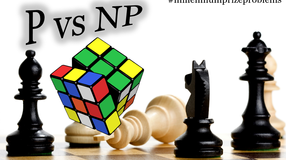HSC1001 - Anatomy and Physiology - Cell Physiology
- YouWei
- Sep 6, 2017
- 2 min read

So the first lecture for Anatomy and Physiology was quite simple. Basically a huge recap for most of the things we've already done before.
We revised that atoms make up cells, which make up tissues, which make up organs, which make up systems, and eventually form an organism.
We are also focusing on the 11 main systems of the human body:
- Circulatory System
- Digestive System
- Respiratory System
- Urinary System
- Skeletal System
- Muscular System
- Integumentary System
- Immune System
- Nervous System
- Endocrine System
- Reproductive System
Our learning objectives also require us to list down the major structures in a typical cell, know the general functions of each organelle, describe the role of DNA in protein synthesis, and discuss the function of ATP, Adenosine TriPhosphate.
Cells are the smallest structural and functional unit capable of carrying out life processes, and the functional activities they perform depend on the specific structural properties of each cell. They are the living building blocks of all multicellular organisms, and all new cells and new life can only arise from pre-existing cells. Despite the broad range of capabilities and functionalities, all cells are fundamentally similar in structure and localised function.
The plasma membrane bounds the cell.
The nucleus contains the DNA, the deoxyribonucleic acid.
The cytoplasm consists of the cytoskeleton and the cytosol, and is the portion of the cell interior not occupied by the nucleus or other organelles.

The Endoplasmic Reticulum is an elaborate, fluid filled membranous system that is distributed extensively throughout the cytosol. Its primary function is to produce proteins and lipids. The rough-ER synthesises proteins for secretion and membrane construction, while the smooth-ER packages new proteins in transport vesicles.
The Golgi Complex is a stack of flattened, slightly curved membrane-enclosed sacs that do not come into contact with one another. Vesicular transport is used when moving from one Golgi sac to the next. Here, proteins from the ER are processed into their final, completed products before being sorted to their eventual destination - for construction as part of the plasma membrane or secreted to cell's exterior via exocytosis.
Lysosomes are small, membrane enclosed, degradative organelles that digest extracellular material brought into the cell by phagocytosis. They can also remove worn-out organelles that have served past their functionality.
Moving on to protein synthesis, we must know the differences between DNA and RNA.

Also, this is the protein synthesis diagram as the syllabus required us to know:

For a period of time I was really interested in protein synthesis and the Central Dogma of Molecular Biology. This means my diagram actually looked like this:

For this lecture, this was all that we are required to know. The next post on Anatomy and Physiology will be next week. Stay tuned for more messy workings! Thanks for reading! :)














Comments